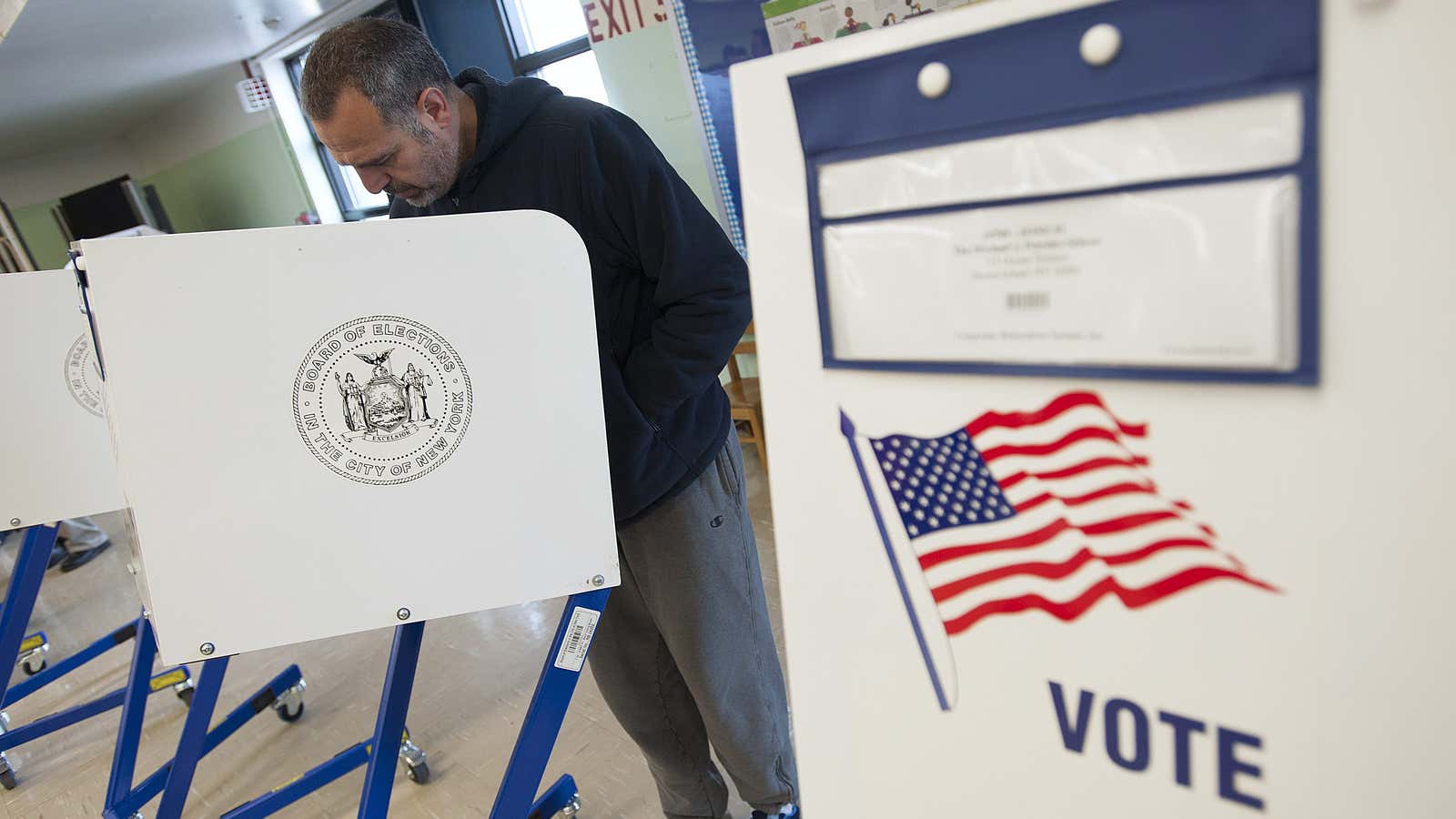After a presidential campaign that has seemed interminable, voters in the United States are tired of hearing about Hillary Clinton and Donald Trump. But Aviva Rosman, COO of BallotReady, an online voter guide, estimates that there are about 40,000 other candidates running for local political office on Nov. 8. They include people running for offices like city council, sheriff, school board member, county water board member, county coroner, tax collector and justice of the peace. And, Rosman says, voters tend to be much less informed about these lower-profile down-ballot races.
Unable to rely on traditional party prisms to make a decision, voters find it hard to choose a candidate they like for local political office. About 30% of voters enter the voting booth and then leave part of the ballot blank. In fact, voter choices about down-ballot races are often so random that candidates listed first on the ballot are likely to get 5% more votes. Many guess based on name, gender and ethnicity, favoring those who share their race or gender.
Rosman experienced this problem first hand when she got into local politics. In 2014, when Rosman, a public school teacher, decided to run for local school council in Chicago, she reached out to her friend Alex Niemczewski for her vote. Though Niemczewski is generally a civically engaged person, she was unaware that there was an election for local office and who the candidates were. As they started talking to people they realized that the problem was widespread.
“We discovered that we are not alone, everyone is unprepared to vote when it comes to local elections so they end up guessing or just leaving blanks,” said Rosman.
They looped in a third friend, Sebastian Ellefson, and they set out to try to find a way to help people vote with confidence all the way down the ballot. They built a very basic version of the website for the Chicago mayoral elections in 2015 and spent $140 to advertise on Facebook. Despite the basic design and low budget, 400 people visited—convincing them that there was demand for such a site. They won funding from the University of Chicago Social New Venture Challenge and the National Science Foundation and began to build the website.
Today, BallotReady, is covering every race up and down the ballot in 10 states—Arizona, Colorado, California, Hawaii, Illinois, New York, Massachusetts, Pennsylvania, Ohio and Virginia. In these states alone, there are 10,291 candidates on the ballot. Voters can go on the website, enter their home address and view their ballot, get aggregated information about their candidates and save their choices to take with them to the polling booth.
The site gathers information on candidates’ education, career, families, stances and policy positions, endorsements and news. In order to research the thousands of candidates on the ballot, the team uses structured crowdsourcing, posting specific questions such as where a candidate went to school on sites like Amazon’s Mechanical Turk, an online crowdsourcing marketplace. If multiple responses concur, then editors add that information to the site. The information is compiled from candidates’ websites, endorsing organizations, media coverage and board of elections data. Candidates are also able to offer additional information on policy stances that they would like to add. So far, the site has had over 250,000 people visit, with more expected closer to Election Day.
“There’s so much focus on the presidential election this year and that’s really important but 96% of our elected officials are at the local level,” said Rosman. “They have a huge impact on schools, environment and communities, so it’s very important that people take the time to vote informed down their entire ballot.”
